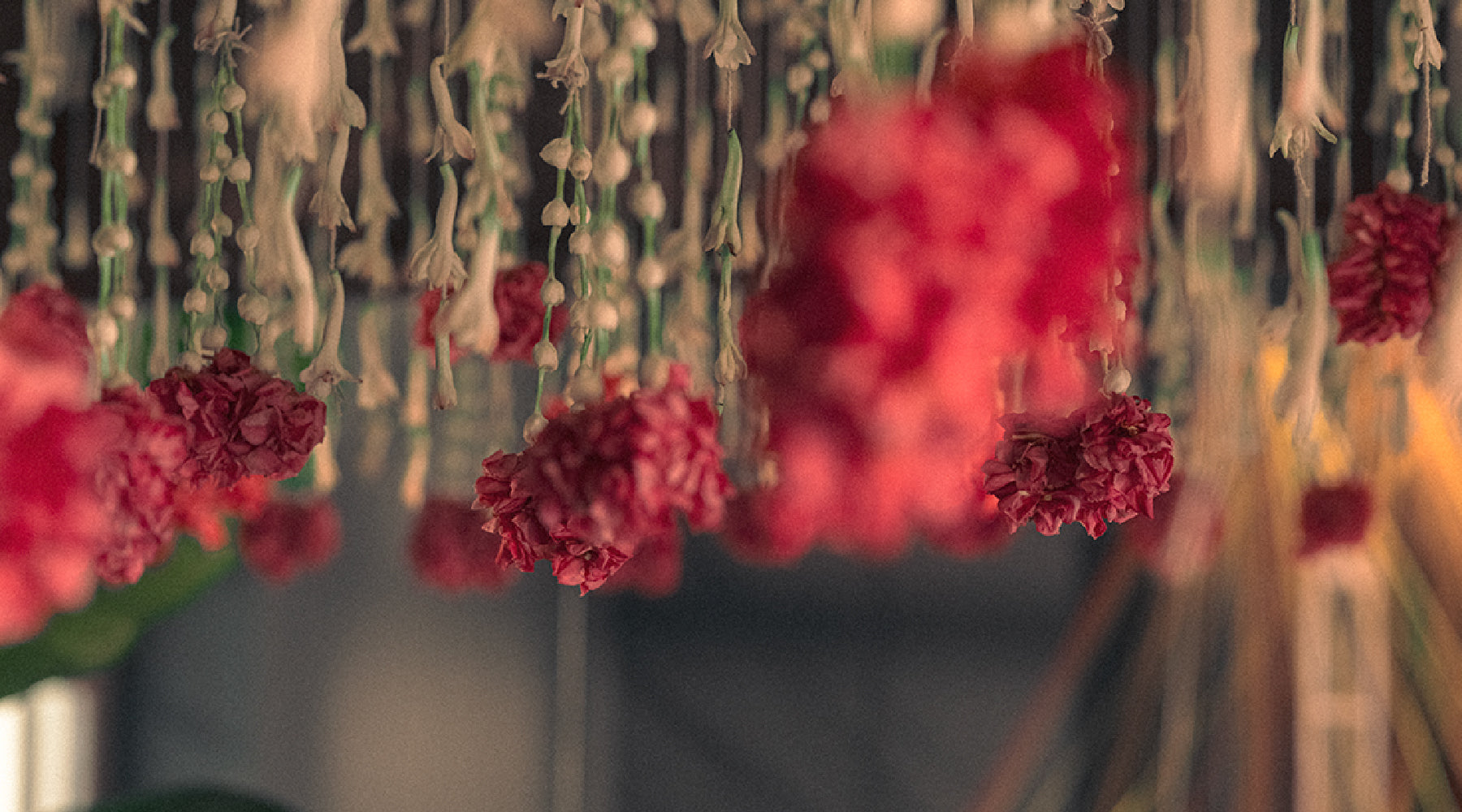Little Rituals : Aarambam - Part I
Kanakavalli celebrates the wedding season with another volume of Little Rituals - Aarambam - which traces auspicious bridal beginnings through the unique lens of the kalyana podavai (the bridal sari) as it journeys across two timelines, brought together in this photo essay.
The first timeline is in the hands of craftsmen, skilled masters who coax fine silken yarns and skeins of beaten gold and silver. From imbuing the yarn with a myriad colours, to spinning it, these preparations come to fruit on the loom, the weaver-craftsman transferring centuries of skill into warp and weft, bringing them together in a visual feast that is the bridal kanjivaram sari.
In the second timeline, the sari finds itself in the hands of a bride, as she gets ready for this new chapter in her life. As the sari awaits its debut, the bride is swept away in the elaborate process of getting ready, while the bustling rituals swirl around her as the wedding party sets the stage for the auspicious union.
The two timelines come together in a glorious culmination, as the sari brings together the legacy of the craft and the skill of the people who birth it, with a joyful bride on the cusp of a new adventure, resplendent in the beautiful drape.
Join us in this second volume of Little Rituals, Aarambam, as we imagine the visual coming together of these two journeys, juxtaposing one with the other, in tribute to the beautiful drape - the bridal sari. We travel two worlds, bringing together both timelines, to finally end at the start of the bride’s journey - the wedding ceremony.
This is Aarambam, the story of the kalyana podavai.

The start of the bridal sari's journey, across both worlds, is captured in this frame : spools of raw silk yarn are dyed in brilliant shades, as the bride’s hair is carefully braided and decorated with traditional ornaments. There is a striking visual parallel between the strands of yarn and the bride’s hair as it is woven into a plait and adorned with strings of fresh mallipoo. These moments of similarity serve to highlight the profound connection between the two disparate worlds of the bridal kanjivaram.

Skeins of raw silk yarn are dyed carefully by hand, dipped into vats of dye, emerging transformed. The off-white silk takes on the rich hues that will be lustrous on the kanjivaram drape.
Every aspect of the adornment of the bride is guided by tradition, connecting her to generations of women before her. Several classic ornaments and pieces of jewellery adorn the bride's hair, including the rakodi (a round ornament studded with jewels worn at the top of the plait), kunjalam tassels, the cobra-shaped jadai nagam embedded with rubies and diamonds, the central nethi chutti that descends over the forehead, and the sun and moon ornaments, called chandra surya billa, placed on either side of the head. Fresh and fragrant mallipoo (jasmine) is also woven into the bride’s braid.

Requiring deep immersion and extraordinary skill, many of the processes are painstaking and time-consuming, leading to the creation of the bridal kanjivaram — a thing of immense beauty.







